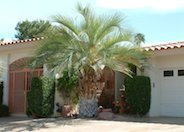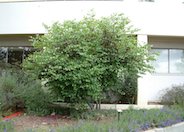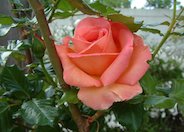
Common name:Pindo or Jelly Palm, Yatay
Botanical name:Butia capitata
This slow-growing tree has leaves that vary from bluish gray to green and has round, yellow to orange fruit that is edible and delicious. Arching leaves spread 10'-15' wide; palm can reach 20' tall.

Common name:Western Redbud
Botanical name:Cercis occidentalis
This deciduous shrub ranges from 6'-20' tall and 10'-15' wide. It is desirable for its magenta spring flowers, yellow to red fall color, and dangling winter seed pods. It is tolerant of many soil types, drought and oak root fungus. It attracts hummingbirds and butterflies. The Western Redbud can be found statewide in CA in the foothills below 4500' elevations in chaparral and woodland communities.
- Cornflower Farms

Common name:Hybrid Tea Rose (selections)
Botanical name:Rosa Hybrid Tea varieties
These shrubs and vines are the most loved in the Western USA and are very resilient. They come in a wide variety of sizes and colors and are easy to maintain with proper care. They can be used in a water-conserving garden with careful attention to irrigation practices.

Common name:Island Alum Root
Botanical name:Heuchera maxima
This large leaf native Heuchera from which many hybrids have been derived will reach about 3' tall in bloom and has deep green leaves with white flowers with a touch of pink.

Common name:Arizona Flattop Buckwheat
Botanical name:Eriogonum fasciculatum polifolium
Flattop buckwheat is a clumping, grass-like plant that grows to 3' tall by 4' wide. White to pink flowers appear in dense, flattened clusters throughout the summer. Plants are tolerant of drought and heat. It is adaptable to most soil conditions but prefers a coarse, well drained site in full sun. It has a naturally low, rounded form. Leaves are dark and gray green with white woolly undersides. This is a highly combustible plant.
| Designer: Stephanie Blanc | Lawnless Green Garden 2 |
Photographer: GardenSoft |
Soils and Compost:
Maintain a two to four inch layer of mulch on the soil surface to reduce weeds, infiltrate rain water, and reduce compaction.
Water Saving Tip:
Be sure to fix all leaks promptly no matter how small they may seem.
Integrated Pest Management:
Drip and other smart irrigation delivers water directly to roots, allowing no excess water for weeds.
